2024 Ford Mustang GT Review – Pony Power, Premium Price

It was almost certainly a coincidence that the site Ford chose to launch the 2024 Ford Mustang GT was near a horse-racing track. The company likely chose the location due to its proximity to challenging mountain roads like the Angeles Crest Highway.
Still, I wouldn’t put it past them. After all, the seventh-generation Mustang is the company’s newest version of a muscle-car thoroughbred.
Well, not totally new. The car’s bones contain a lot of carryover. But the skin is new, and so is the cabin. The engine is also massaged. When seen on the street, there will be no mistaking this Mustang for last year’s.
(Full disclosure: Ford flew me to Southern California, fed me, and housed me for two nights. They offered a water bottle I didn’t take and a notebook that I did.)
Another disclosure here – V8 Mustangs are near and dear to my heart. I owned a Fox-body LX. My dad bought a 1986 GT (with T-tops) new, and that car played at least a small part in making me an automotive enthusiast.
Most members of the automotive media have at least one make and/or model that they have a fondness – or antipathy – towards. The V8 version of the Mustang is one of mine. That said – this review will be as honest and fair as possible. I just wanted y’all to know where I’m coming from.
Like the EcoBoost, the exterior design gets more angular. Just like the four-cylinder car, there’s a gaping grille that nods at the first-gen Mustang and a concave shape to the taillights that are meant to evoke the 1967 Mustang. GTs are differentiated from EcoBoosts by a hood extractor that Ford says is functional. GTs also get the now-familiar “5.0” fender badge.
There’s also an Easter egg I neglected to mention yesterday – all seventh-gen fastbacks (aka coupes) get a rear-window graphic that shows the silhouette of every Mustang generation.
GT models have larger grille openings for better airflow, and they also get a redesigned front splitter.
Like with the EcoBoost, interior changes revolve around the display screens – customers either get a two-screen setup for gauges and infotainment or a single curved screen that extends across the driver’s side of the cockpit and has the infotainment part angled towards the driver. The system is powered by a video-game platform – the Unreal Engine 3D platform.
Just like the EcoBoost, the GT offers customizable gauges, including a homage to the old Fox bodies from 1987 to 1993. You can pick your favorite theme or leave it matched to the drive mode. One other nugget of note – both the EcoBoost and GT let you change drive modes and steering modes via the steering wheel. For other options, such as accessing quiet mode for the exhaust or setting up auxiliary gauges, you’ll need to press a button marked with a prancing pony in order to work the menus.
The new cabin moves functions that previously used buttons or knobs to the touch screen, leaving just a volume knob. Temperature adjustments now require you to use the Sync4 infotainment screen. The good news is that this isn’t a haptic-touch setup, and it does seem to work well, but we’d still prefer knobs and buttons. They’re easier to use and less distracting. A cleaner look is fine, but simpler function is better.
Other new interior features include overhead USB ports for GoPro use, a flat-bottomed steering wheel, and an available system that allows drivers to rev the engine via the key fob while they’re not in the car.
The 5.0-liter Coyote V8 gets a few changes – a new dual intake with dual electronic throttle bodies, a steel oil pan, an updated cylinder-head design, and updated cylinder-head gaskets. It makes 480 horsepower (486 with the optional active exhaust) and 415 lb-ft of torque (418 with the active exhaust).
GT buyers can opt to shift for themselves with a six-speed manual transmission or let a 10-speed automatic do the work for them. We’d opt for the six-speed manual – which has rev-matching. This isn’t out of some sense of old-school nostalgia, but because the transmission is darn good. It’s slick-shifting and it’s easy to grab the right gear, even when driving in anger. The clutch is smooth and engages seamlessly – believe it or not, it would not be hard to teach a neophyte how to drive a stick using this car. Of course, the gobs of torque available also helps. The peak is 4,900 RPM but there’s plenty of twist even at idle.
Fire this thing up and the sound is pure American muscle. It sounds almost like a street-going NASCAR stocker. Snick it into first gear and get out on the road, and you can feel the car wanting to play. Pray the on-ramp isn’t occupied by slower traffic, plant your right foot, work your way through the gears, and you’ll hit the freeway grinning.
The GT’s canyon-carving experience is a bit like the EcoBoost’s but with more power available. The car’s steering is smooth, accurate, and appropriately heavy, though a bit artificial in feel. You don’t need to make a lot of mid-corner corrections, and the car carves corners with an ease that makes you wish you could spend every day driving like this. All that power makes passing a breeze, of course, and it gets you from corner to corner with alarming alacrity.
You do need to slow down for these corners, and that’s where one of the biggest dynamic flaws rears its head. The Brembo brakes are stout, thankfully, but also a tad grabby and tricky to modulate. This isn’t all bad – the initial bite helps you slow quickly when you come in a bit too hot, and a quick tap tap can bring the car in line if you feel, mid-corner, that you’re outdriving your grip. That happened to me in a long sweeper – I was carrying a tad too much speed so I gave the Brembos a light brush and the car settled right into line.
The bad part, of course, is that you can scrub too much speed. And while it’s usually preferred to brake before the corner and accelerate through, sometimes adjustments are needed, and it would be helpful if the brakes were a little easier to modulate. Grabby brakes also make the car a little harder to drive smoothly in urban stop-and-go.
I drove three GTs – a convertible manual, a coupe manual, and a coupe automatic. The coupe manual did pick up some sort of shudder under hard braking as I came downhill on the Angeles Crest Highway. My initial thought was a tire issue, but the pressures were fine and the tires passed a cursory visual inspection. Ford folks checked the car out and found no issues, and the shudder seemed to go away when I got back on city streets. I suspect I may have picked up a rock in the tires or that a combination of the near 100-degree heat and running the car hard through the mountains may have presented a temporary condition. Or maybe I am crazy. I’ll keep an eye out for this during future testing. It’s also worth noting that all the Mustangs we drove were pre-production cars, so perhaps it was a simple teething issue.
Chassis flex has been a bugaboo on Mustangs for a long time, and it showed up here and there on certain types of pavement, but it was improved over the past generations. Overall, the car usually felt well put together. That even applies to the convertible – chopping the top does mean that it’s not as stiff as the GT, but it was still generally stiff enough to feel solid, even when driven hard. The top drops and raises quickly, though one must still unlatch a plastic latch to lower it – and lock said latch when the top goes back up.
Ford notes that two golf bags will fit in the trunk with the top down. I had no chance to verify this claim.
I did most of my aggressive driving in Sport mode, but the handling doesn’t drop off too much in Normal. The GT’s ride is stiff, even on smooth roads – stiffer than the EcoBoost. You expect that in a sports car, and opting for magnetic ride (which requires the Performance Pack) helps mitigate it somewhat.
My time in the automatic was brief. I found it fine for commuting when in Normal mode, but it shifted a bit harshly in Sport mode – though not as harshly if you use the available paddle shifters. I had no opportunity to drive the automatic hard on the two lanes – it seemed acceptably smooth in urban settings. Again, in Normal mode. Other drive modes include Drag and Track.
As with the four-cylinder, the infotainment system is a mixed bag – as noted above, I miss knobs but the touchscreen controls could be worse. It’s a bummer that the home screen isn’t customizable. I liked the various gauge configurations. Legroom and headroom are fine for most adults in the front, but the rear isn’t useful for anyone but small children.
Despite their differences – four cylinders and the availability of a manual transmission being the main ones – the two Mustangs have a lot of feature availability in common. The drift brake that you can use to try out your James Rockford fantasies in empty parking lots? Available on the GT, including with the stick. Both cars are available with active exhaust, a Performance Pack, and magnetic ride.
Other standard or available features on the GT include Apple CarPlay and Android Auto, wireless phone charging; 3.15, 3.55 Torsen, or 3.73 Torsen axle ratios; a Performance High package (driver’s memory seat, Bang & Olufsen premium audio, Ford Co-Pilot360 advanced-driving aids); a Performance Pack (19-inch wheels, performance linings for the Brembo brakes, heavier duty front springs, K-brace, body-colored raised rear wing, a strut-tower brace, larger brakes, wider rear wheels/tires, sportier chassis, sportier tuning for the electric power steering, stability control, and ABS; and a larger rear sway bar); a Bronze appearance package (bronze wheels, bronze badging), and Nite appearance package (black roof, black wheels, and more).
There are even more – features like navigation, satellite radio, leather steering wheel, heated steering wheel, color accents, and Bluetooth.
Buyers can choose from one of three colors for the brake calipers, and there are two new available exterior colors – Vapor Blue and Yellow Splash.
The advanced driver aids that comprise Ford Co-Pilot360 include adaptive cruise control, lane-keep assist, lane-departure warning, driver-alert, road-departure warning, blind-spot assist, pre-collision assist, evasive-steering assist, speed-sign assist, and intelligent speed assist. If you have the automatic, you also get stop-and-go with the adaptive cruise, as well as intelligent adaptive cruise control.
Base price is $42,495 with a Premium Fastback starting at $47,215. As an example, the manual coupe I drove had the Bronze Package, Performance Package, High Package, MagneRide, active exhaust, and Recaro seats, and it cost $62,125 with the $1,595 destination fee.
Convertibles start at $52,515 and require you to go Premium. My tester had the Nite package, magnetic ride, High package, Performance package, and active exhaust and ran $64,325 with destination.
Fuel economy is listed at 14/23/17 for the manual and 15/24/18 for the automatic.
The 2024 Ford Mustang GT remains an icon of American muscle – and now it has no competition. The Chevrolet Camaro is dead, and the Dodge Challenger will be dead soon. The Toyota Supra and Nissan Z appeal to a different sports-car buyer.
There was a time when the Ford Mustang GT allowed one to get V8 power cheaply. That changed many moons ago. This car isn’t cheap, and that stinks. Because it’s still a blast to drive. Its flaws are minor – touchscreen controls, grabby brakes, a useless rear seat, limited interior storage – and are mostly acceptable trade-offs in pursuit of performance.
It’s too bad this car costs so much, especially when optimized for performance. Yet when you nail the gas on an on-ramp or bomb through a corner, it’s easy to forget about the high sticker price.
I’m sad that speed like this is no longer affordable, but happy it still exists.
[Images © 2023 Tim Healey/TTAC.com, Ford]
Become a TTAC insider. Get the latest news, features, TTAC takes, and everything else that gets to the truth about cars first by subscribing to our newsletter.

Tim Healey grew up around the auto-parts business and has always had a love for cars — his parents joke his first word was “‘Vette”. Despite this, he wanted to pursue a career in sports writing but he ended up falling semi-accidentally into the automotive-journalism industry, first at Consumer Guide Automotive and later at Web2Carz.com. He also worked as an industry analyst at Mintel Group and freelanced for About.com, CarFax, Vehix.com, High Gear Media, Torque News, FutureCar.com, Cars.com, among others, and of course Vertical Scope sites such as AutoGuide.com, Off-Road.com, and HybridCars.com. He’s an urbanite and as such, doesn’t need a daily driver, but if he had one, it would be compact, sporty, and have a manual transmission.
More by Tim Healey
Latest Car Reviews
Read moreLatest Product Reviews
Read moreRecent Comments
- Spectator Wild to me the US sent like $100B overseas for other peoples wars while we clammer over .1% of that money being used to promote EVs in our country.
- Spectator got a pic of that 27 inch screen? That sounds massive!
- MaintenanceCosts "And with ANY car, always budget for maintenance."The question is whether you have to budget a thousand bucks (or euro) a year, or a quarter of your income.
- FreedMike The NASCAR race was a dandy. That finish…
- EBFlex It’s ironic that the typical low IQ big government simps are all over this yet we’re completely silent when oil companies took massive losses during Covid. Funny how that’s fine but profits aren’t. These people have no idea how business works.





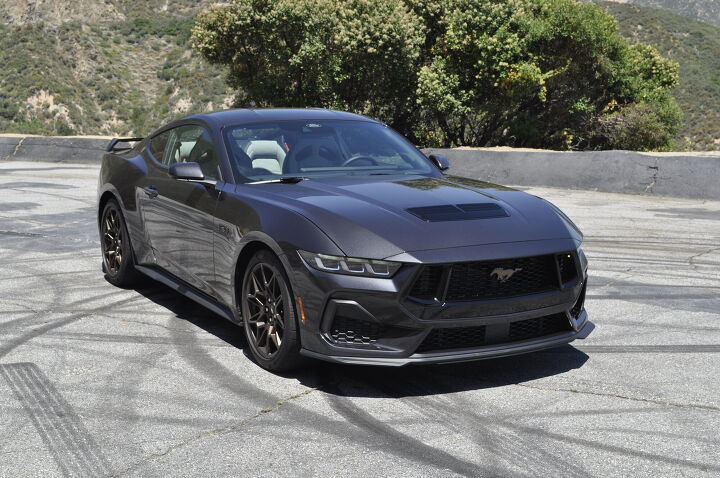























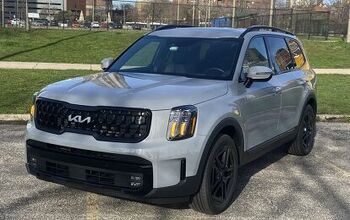
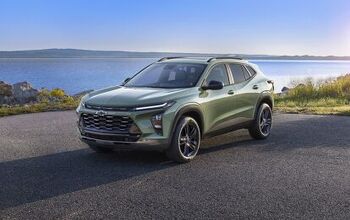


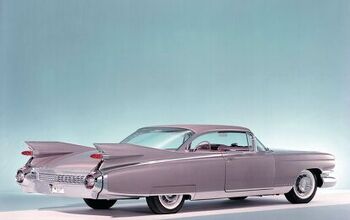




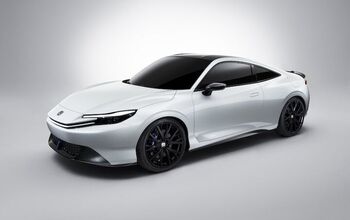
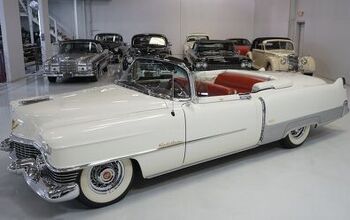

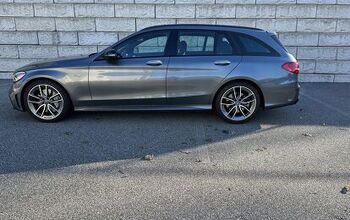

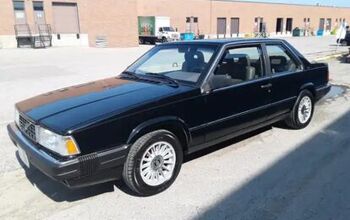
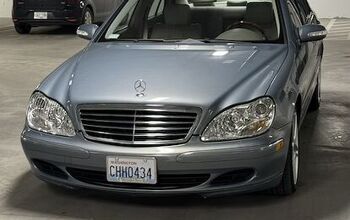


Comments
Join the conversation
I read with interest some comments including the author's regarding the cost of "performance". What must be recognised is the cost of what level of performance.
I don't think performance is that expensive. Instead of a Mustang you can buy an i30 N Line for a lot less, if you have them in the US and Canada an i20 N Line is also available and offers performance very cheap.
Performance costs, there is additional design, engineering, manufacturing, testing costs over a traditional vehicle, I'd even suspect additional costs to cover warranty work.
If you can't afford a Mustang then buy another performance vehicle that costs less or get a better paying job.
I like the performance numbers. I like all the cool options. I like the tech. But this looks like a freaking Camaro...the ugly Camaro.